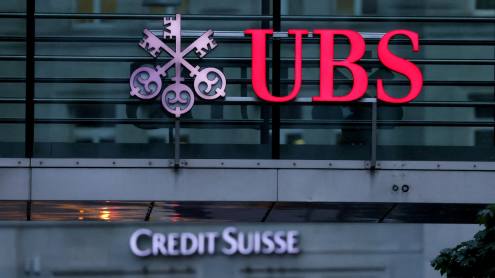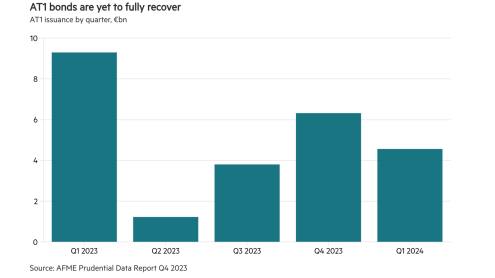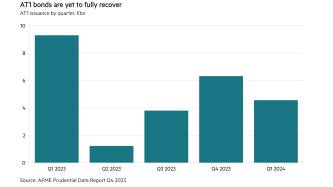When Clydesdale Bank issues an initial public offering (IPO) in London in early February to raise some £2bn ($3.01bn) for its parent, the management will run their own ship for the first time in close to a hundred years.
The venerable Scottish institution – founded in Glasgow in 1838 – will pay back most of the money to its former parent – the National Australia Bank (NAB), who had owned it since 1987 – and then stand independent. It will join the ranks of UK challenger banks in its regional strongholds of Scotland and Yorkshire, where it owns the Yorkshire Bank. Prior to NAB, Clydesdale had been part of Midland Bank since 1920.
Lacking love
Clydesdale had found itself ‘unloved’ inside NAB, according to Barry Gardner, a bank executive. "We were not regarded as core to NAB’s operations," he says.
Clydesdale has been primed for autonomy with a new management team, a £1.7bn capital indemnity provided by NAB against future fines for conduct failures committed under NAB’s watch, and a pot of investment to upgrade its digital and branch network. Clydesdale was then put on the runway to be a standalone institution, quoted separately in Australia and London. Some three-quarters of the shares will however remain with investors in NAB, while the remainder will go to new investors, now being sought.
The bank is planning to do "something different" once it is free of the shackles of a large parent, according to Ian Smith, its finance director. Mr Smith joined Clydesdale in November 2014 from Deloitte, where he had run the financial services practice. He had earlier been through the crisis as deputy chief financial officer of HBOS and then Lloyds. "We will have greater freedom to chart our own path," he says. Mr Smith reports to David Duffy, the Clydesdale CEO, who was appointed in May 2015 from Allied Irish Banks.
The bank’s process of separation will be simplified, says Mr Smith, because Clydesdale is not a "carve out" from the larger parent. It had retained most of its systems while operating inside NAB and these will merely be taken out and allowed to run autonomously. Clydesdale is at the larger end of the challenger institutions in the UK, with customer lending of £28.7bn in 2015, against £23bn for Virgin Money and £22bn for TSB. The bank has £26bn of customer deposits, 3% of the UK’s current account market and 4% of the country's small and medium-sized enterprise (SME) banking market. Mr Smith says: "We will be the largest of the challengers, we have a platform built for growth." The bank has a Tier 1 capital ratio of 13.2% and an investment grade rating.
Building back up
One challenge facing Clydesdale's management is to build the bank's customer base. Mr Smith says that bringing management back home to Scotland will enable managers to get closer to the bank’s customers, who are largely in Scotland and the north of England. Clydesdale has 14% of Scotland’s mortgage market, and Mr Smith says "a standalone management team based alongside our business rather than on the other side of the world can operate in the interests of our customers. This can be a powerful force."
The new managers say they will seek to concentrate on lending to small SMEs in specialist areas such as agriculture. This will mark a turnaround from an earlier policy, which Mr Smith says was ill-advised, of lending to larger companies, where Clydesdale was part of a syndicate with large banks who had more skin in the deal. It bases its appeal to SMEs on its "agility", according to Mr Smith. "We are more agile and we can move the needle more rapidly than our larger competitors. Hiring 10 bankers and doing £100m of business moves the needle for us; it is a drop in a very big ocean for the big guys. It is the law of large numbers," he says.
He cites the case of the bank’s decision to lend to companies in the small-scale renewable sector, a "natural evolution" from the agricultural sector, where the bank has had a long-standing presence. "We are prepared to make the investment in the small-scale renewable sector and acquire the expertise to create a business of a few hundred million pounds," says Mr Smith.
Once the bank launches its IPO, it will seek to join the battle for retail customers with the launch of branches that are equipped with up-to-date digital technology, providing a conferencing system to allow SMEs to talk to sectoral experts in other branches using an iPad provided by the branch. Retail customers will be able to set up accounts online, using straight-through processing, where the app, says Mr Smith, "never touches the edge".
Clydesdale's scale has led some to question whether the bank could be quickly acquired by a larger bank to boost its share in the UK. Others have argued it could be a ‘consolidator’ of smaller UK challengers. For the moment, the bank’s management is focused on the IPO and the route it provides to autonomy and an independent future. "Being a standalone management is motivating us. We expect it to stay that way," says Mr Smith.











